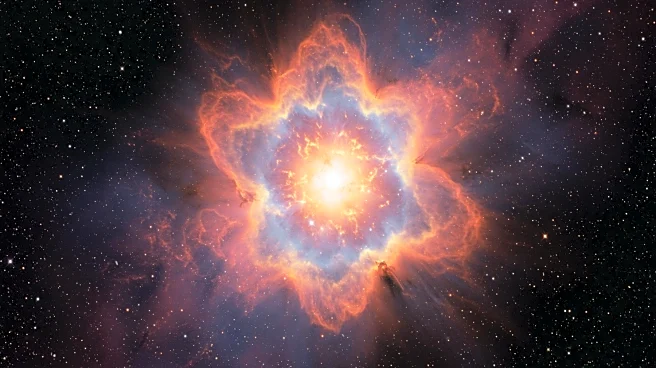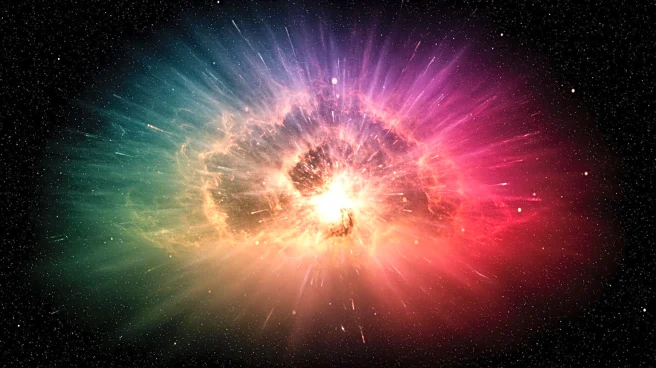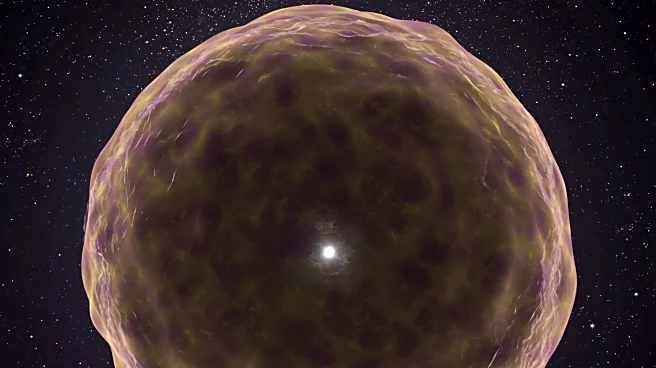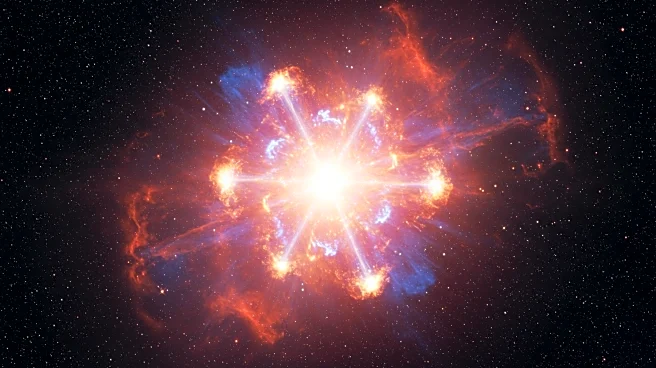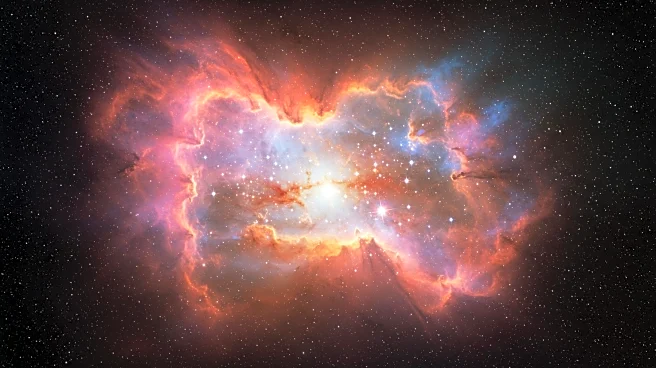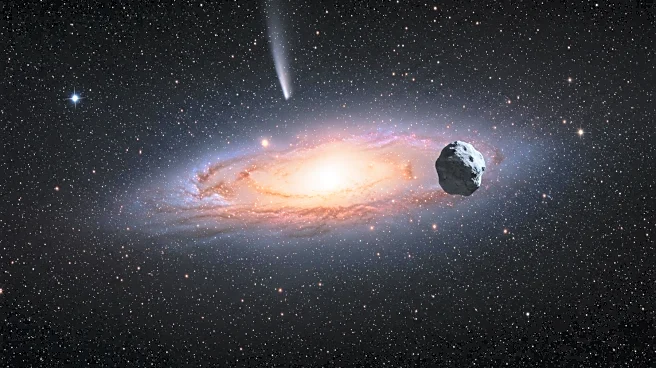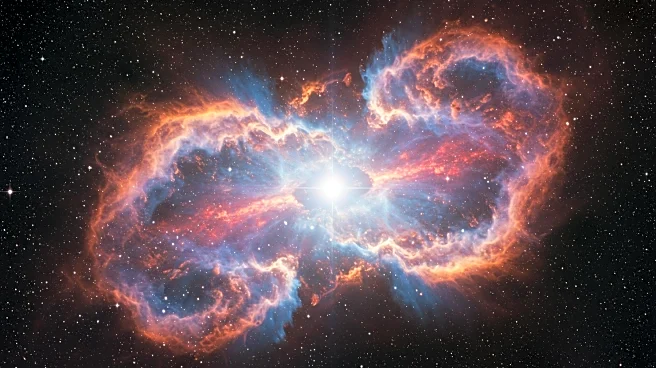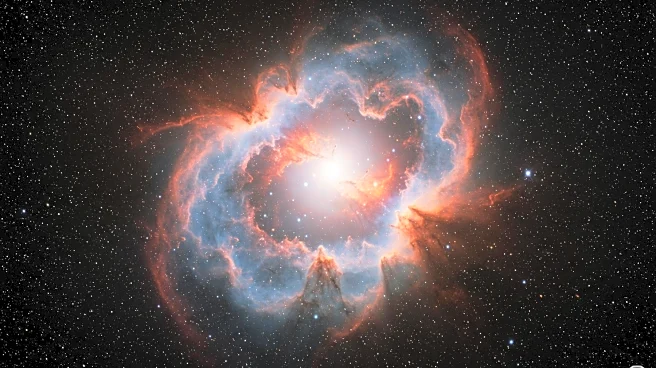Rapid Read • 7 min read
For the first time, scientists have observed the internal structure of a dying star during a supernova explosion, providing a rare glimpse into stellar evolution. The star, located in the Milky Way galaxy, had shed its outer layers of hydrogen and helium, as well as its dense inner layers of silicon and sulfur. This unprecedented observation was made possible by the telescopes at the W.M. Keck Observatory in Hawaii. The discovery confirms theories about the layered structure of massive stars nearing the end of their life cycle, with lighter elements on the outside and heavier ones near the core.
AD
This observation is significant as it validates existing theories about the composition and structure of large stars before they explode. Understanding the layers and elements involved in a supernova can provide insights into the life cycle of stars and the processes leading to their explosive demise. This knowledge is crucial for astrophysics, as it helps refine models of stellar evolution and the chemical enrichment of galaxies. The findings could also influence future research on supernovae and the role of binary star systems in stellar dynamics.
Further research is needed to determine how the star's layers were stripped away, whether through violent ejections or interactions with a companion star. Scientists aim to capture similar events to deepen understanding of stellar evolution and supernova mechanics. This may involve enhanced observational techniques and collaboration across astronomical institutions to monitor and analyze dying stars.
AD
More Stories You Might Enjoy
